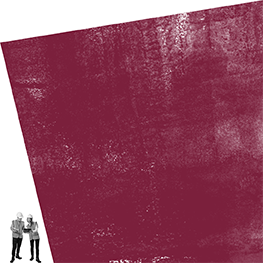
This is the latest of a series of regular blogs by our Barrister, Nicholas Dowding KC, where he will be discussing different legal issues in the world of real estate.
No student of the law of dilapidations could fail to be struck by the almost unmanageably large number of decided cases in which the question has centred around whether particular work amounts to repair, within the ambit of a general tenant’s covenant to repair or keep in repair. Many of these go back to the 19th century, and some date from still earlier, but the flow continues unabated. This feature might be said to have been accentuated in the modern digital age by the ready availability of and ease of access to full transcripts of virtually all High Court and Upper Tribunal judgments, irrespective of their contribution, or otherwise, to legal understanding.
All of which poses the question: what are the really key cases on the meaning of repair? Is it truly necessary to read all the cases in the books in order to understand the subject? Or are most of them decisions on their own facts, which do not add much, if anything, to fairly well-established principles of law? Would it, in fact, be possible to provide an intelligent and practically-minded newcomer to the subject with, say, five cases, and be reasonably confident that, thus armed, they would be able to identify the key underlying principles on the legal meaning of repair, and to have a decent shot at determining whether particular work is or is not work which a tenant would be obliged to do under a covenant to repair?
Let us suppose that it is, and call the resulting exercise, for want of anything better, “the five-case challenge”. What follows is a personal selection. Others may have different choices, and some may dispute the premise that it is possible to distil the main principles out of five cases at all.
Our notional intelligent newcomer is unlikely to need anything (other than, perhaps, a dictionary) to tell them that, absent a special context, to repair something is ordinarily to mend it or make it good. But they may ask themselves what exactly is enough to trigger the obligation in the first place. Is it enough that the premises are badly designed, or that they are unfit to be occupied? Or is something more required?
Here, the decision in Post Office v Aquarius Properties [1987] 1 All E.R. 1055 must be first on anyone’s list. As is well-known, it was decided in that case (following Quick v Taff-Ely Borough Council [1986] Q.B. 809) that “[If] the premises demised are and at all times have been in the same physical condition… as they were when constructed, no want of repair has been proved”. So, in other words, no obligation to repair can arise unless there exists disrepair, i.e. a deterioration from the physical condition of the premises when new. The result (surprising to some) was that the tenant was not liable to do anything about a basement which had flooded by reason of a defectively constructed joint between the walls and floor (there being no evidence that the water had resulted in damage to any part of the building), because it was not in disrepair.
But this only takes us so far. On the above test, a minor and almost invisible scuff on concealed plasterwork might count as “disrepair”. Does it then follow that the tenant would be obliged to repair it?
That brings one to the twin landmark cases of Proudfoot v Hart (1890) 25 QBD 42 and Calthorpe v McOscar [1924] 1 K.B. 16. Both make it clear that it is not every single item of disrepair which must be remedied under an obligation to repair. It is only disrepair which brings the condition of the premises below the standard of repair imposed by the obligation. In the ordinary case, that standard is, in the well-known words of the Court of Appeal in Proudfoot, “such repair as, having regard to the age, character and locality of the house, would make it reasonably fit for the occupation of a reasonably minded tenant of the class who would be likely to take it”. Although the expression being interpreted in Proudfoot was actually “good tenantable repair”, it seems tolerably clear that the test is of universal application to the general covenant to repair. As appears from Calthorpe, the test is to be applied as at the date of the letting, so that a deterioration in the class of tenants likely to occupy the building does not produce a corresponding deterioration in the standard of repair, and vice-versa.
Three down. So far, so good. What about the last two?
It may be that, having followed the analysis this far, our intelligent newcomer would ask themselves another key question, namely: is there any further legal limitation on what is repair? Or is it the law that once there exists disrepair which brings the premises below the applicable standard of repair, the tenant must then do whatever is necessary to restore them to that state, even if it alters the character of the premises completely?
That is, of course, not the law. It has long been settled that there comes a point when remedial work is so extensive or transformative that it ceases to be “repair” at all, and the tenant is not obliged to do it. For this, I could have chosen any one of a number of cases. In the end, I have gone for Brew Bros v Snax (Ross) [1970] I Q.B. 612 and Ravenseft Properties v Davstone (Holdings) [1980] 1 Q.B. 12. In the first, Sachs LJ held, in a classic and often-cited passage, that “the correct approach is to look at the particular building, to look at the state which it is in at the date of the lease, to look at the precise terms of the lease, and then come to a conclusion as to whether, on a fair interpretation of those terms in relation to that state, the requisite work can fairly be termed repair. However large the covenant it must not be looked at in vacuo … Quite clearly this approach involves in every instance a question of degree.” This emphasises a critical point that, to my mind, must never be forgotten: the question is ultimately one of interpretation of the covenant in question in its own particular context, and there can never be a one size fits all answer. In Ravenseft, the once-popular but misconceived “doctrine of inherent defect” (that is to say, the notion that remedying disrepair caused by some inherent defect in the original design of the premises can never, as a matter of law, be within an obligation to repair) was finally laid to rest, and the correct test was held to be that it is always a matter of degree whether what the tenant is being asked to do can properly be described as repair or whether, on the contrary, it involves giving back to the landlord a wholly different thing from that which he demised.
For one last thought, one might recall Hoffmann J’s observations in Post Office at first instance, that: “the whole law on the subject may be summed up in the proposition that ‘repair’ is an ordinary English word… the question is whether the ordinary speaker of English would consider that the word ‘repair’ as used in the covenant was appropriate to describe the work which has to be done. The cases do no more than illustrate specific contexts in which judges, as ordinary speakers of English, have thought that it was or was not appropriate to do so.” If the “whole law” is that “repair” is an ordinary English word, then perhaps, on reflection, five cases are too many – indeed, it may be that none at all are needed (except possibly Post Office at first instance!). I rather doubt that many textbook writers would be too thrilled at that idea – or on reflection, actually maybe some would…
As always, if you wish to comment or share your experiences, please feel free to contact me at [email protected].











